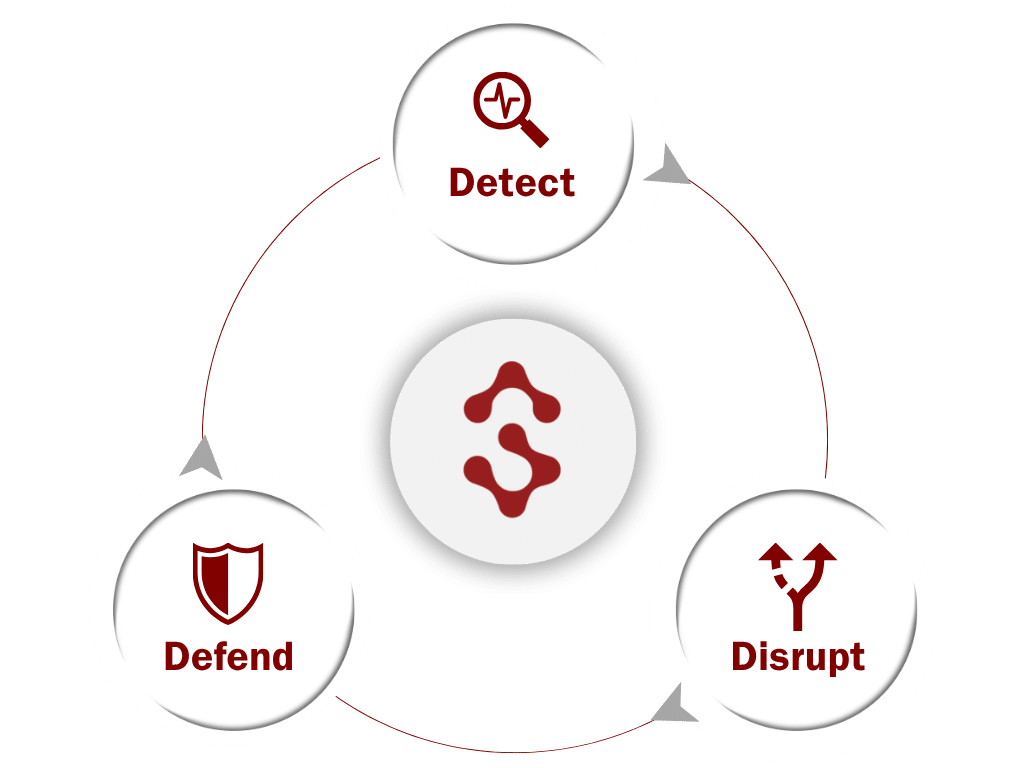AI Business Strategy: Why It Matters Now
Artificial intelligence is no longer just an emerging technology. It is reshaping how businesses operate, compete, and grow. AI-native companies are launching with leaner teams, faster scaling models, and entirely new definitions of value. In contrast, many traditional firms are still experimenting at the margins.
A recent McKinsey study found that 63 percent of businesses using AI expect it to significantly change their industry’s competitive landscape within the next three years. That shift is already underway.
The real question is no longer whether to use AI but how to align around it. A strong AI business strategy is not about adopting new tools. It is about rethinking your model, your value proposition, and your ability to adapt.
In this article, we explore what makes an AI business strategy effective and how leaders can position their organizations to compete in a world being rewritten in real time.
From Adoption to Adaptation: A Strategic Shift
Most companies still approach AI as something to adopt, a toolset to improve workflows or enhance efficiency. But true competitive advantage in the AI era will not come from adoption alone. It will come from adaptation.
Adoption assumes your business model stays intact after implementing AI. Adaptation challenges that assumption. AI does not just make tasks faster, it can eliminate them entirely. It does not just improve workflows, it replaces them with autonomous systems that deliver outcomes, not steps.
This shift has deep strategic implications. It affects how value is created, how roles are defined, and what customers expect. Internally, it demands new capabilities. Externally, it redefines what success looks like.
The companies that will lead are those that move beyond pilots and tools. They will rethink their models from the ground up, building strategies that reflect a new AI-driven logic of scale, speed, and service.
Dissecting AI Business Strategy: Three Strategic Pillars
An effective AI Business Strategy is not a single initiative. It is a multi-layered approach that integrates AI into the core fabric of the business. At its foundation are three distinct but connected strategies:
1. AI Implementation Strategy
Focuses on how AI is operationalized across the enterprise.
- Objective: Integrate AI into internal processes, workflows, and decision-making systems.
- Key Actions:
- Automate repetitive tasks using AI agents and copilots.
- Enhance data pipelines to support machine learning operations.
- Build internal AI fluency across non-technical teams.
- Outcome: Greater efficiency, reduced cost, and smarter operations aligned with business goals.
- Example: In 2025, Citigroup intensified its AI strategy under CEO Jane Fraser’s modernization agenda. The bank appointed new leaders to co-sponsor the firm’s AI strategy, aiming to integrate AI widely across its operations. This includes scaling generative AI tools to over 150,000 employees and piloting innovative technologies such as agentic AI.
2. AI Product Strategy
Focuses on how AI creates differentiated value for customers.
- Objective: Embed AI into core offerings to improve product capabilities, personalization, and competitive positioning.
- Key Actions:
- Redesign products and services around AI-generated insights or autonomous functionality.
- Leverage AI to create new revenue streams, not just augment existing ones.
- Monitor shifts in customer expectations driven by AI-native competitors.
- Outcome: Products that evolve faster, deliver more value, and respond intelligently to user needs.
- Example: In June 2025, Siemens appointed Vasi Philomin, a former Amazon executive, as its new head of data and artificial intelligence. This move reinforced Siemens’ strategy to become a more technology-focused company, with AI playing a central role alongside industrial software.
3. AI Investment Strategy
Focuses on where and how the business allocates capital to build AI capabilities.
- Objective: Prioritize investments that future-proof the business and create long-term advantage.
- Key Actions:
- Invest in talent, including data scientists, prompt engineers, and AI product managers.
- Form strategic partnerships with AI startups, research labs, or platform providers.
- Evaluate build-versus-buy decisions with clarity around IP, speed, and scale.
- Outcome: A portfolio of AI investments that balance short-term wins with long-term transformation.
- Example: In May 2025, IBM announced plans to invest $150 billion in the U.S. over the next five years, focusing on manufacturing mainframes, quantum computers, and AI technologies. This significant investment underscores IBM’s commitment to expanding its presence in the competitive AI sector.
These three strategies must work in concert. AI implementation enables operational capability. AI product strategy drives market relevance. AI investment strategy sustains both through smart resource allocation.
Together, they form the backbone of a truly adaptive and forward-looking AI Business Strategy.
Building an AI Business Strategy: Key Considerations
Designing an AI Business Strategy requires more than internal alignment. It demands a clear view of how the competitive environment is changing and what emerging threats are taking shape.
Key external considerations include:
- AI-native competitors
These companies operate with different assumptions. They scale without human overhead, personalize in real time, and deliver services at near-zero marginal cost. They are not optimizing existing models. They are building new ones. - Non-traditional entrants
AI enables companies from adjacent sectors to break into your space. For example, a customer support platform may evolve into a full-service CX consultancy using AI insights. These adjacency shifts can catch legacy players off guard. - Speed of execution
AI-native firms deploy updates continuously and adjust strategies in days, not quarters. Competing means moving from static roadmaps to adaptive strategy cycles. - Early disruption signals
Competitive pressure rarely starts with a headline. It shows up in subtle places: pricing experiments, unusual hiring trends, or unexpected partnerships. Companies need systems in place to detect these shifts early.
Ignoring these external signals does not delay disruption. It accelerates your exposure to it. An effective AI Business Strategy treats these dynamics as essential inputs.
Linking AI Readiness to AI Business Strategy
AI readiness is the foundation of a successful AI Business Strategy. It reflects an organization’s ability to respond to disruption, adapt to shifting market conditions, and align leadership around a common AI vision. Without readiness, strategy remains theoretical. A truly effective approach begins with understanding external threats, assessing internal vulnerabilities, and building the awareness, alignment, and agility needed to turn strategic intent into sustained action.
Adapt to AI: A Strategic Response Framework
The Adapt to AI framework offers a dynamic approach to navigating disruption through three interconnected capabilities: Detect, Disrupt, and Defend.

The Adapt to AI framework offers a dynamic approach to navigating disruption through three interconnected capabilities: Detect, Disrupt, and Defend.
- Detect involves scanning the competitive environment for weak signals before they become seismic shifts. This includes tracking pricing changes, unexpected partnerships, or emerging AI-native entrants.
- Disrupt is about acting decisively. Rather than mimic competitors, organizations identify strategic plays only they can make, using proprietary assets, customer trust, or data advantages.
- Defend ensures the core business remains resilient. This might include reinforcing data moats, embedding AI into customer touchpoints, or securing exclusive channels.
These are not one-time moves. They form a continuous cycle. Detection feeds disruption. Disruption creates new exposure. Defense preserves the advantage. Then it begins again.
A robust AI Business Strategy does not just survive disruption. It learns from it, leverages it, and leads because of it.
Case Study: Futureproofing with Adapt to AI
A global financial technology firm partnered with Sedulo to assess its vulnerability to emerging AI-native competitors. While their internal teams were focused on incremental process automation, new entrants were redefining the customer experience with fully autonomous platforms and personalized advisory tools.
Using the Adapt to AI framework, the company implemented an early signal detection system, conducted a business model stress test, and launched a cross-functional team to evaluate disruption scenarios.
Within six months, the firm introduced an AI-enhanced product line and restructured its pricing model to better compete with leaner, data-driven startups. At the same time, it reinforced its core offering by embedding predictive intelligence into client workflows.
The result was a dual-pronged AI Business Strategy: one that aggressively moved toward AI-native design while protecting key revenue streams through intelligent defense.
Key Takeaways: Building a Resilient AI Business Strategy
- A true AI Business Strategy focuses on adaptation, not just adoption.
- AI-native competitors are rewriting the rules, legacy firms must respond accordingly.
- Strategy must extend beyond tooling and into business model design.
- Implementation, product innovation, and smart investment form the strategic foundation.
- External awareness is essential: watch for weak signals, adjacency shifts, and pricing disruptions.
- The Adapt to AI cycle — Detect, Disrupt, Defend — turns disruption into advantage.
Whether you’re looking to assess your current AI readiness, pressure-test your business model, or build a strategy that gives you a competitive edge, we’re here to help. Connect with our team to learn how the Adapt to AI framework can position your organization to detect disruption early, respond decisively, and lead confidently.
Contact us to start the conversation.
Frequently Asked Questions
What is the Adapt to AI framework?
Adapt to AI is a strategic model that helps organizations navigate AI disruption by focusing on three capabilities: Detect early signals of change, Disrupt competitors through unique strategic moves, and Defend core business value from erosion. It’s not just a framework, it’s a repeatable cycle designed for long-term resilience.
How is this different from traditional AI consulting?
Unlike traditional engagements focused on tool adoption or isolated pilots, our approach starts with the business model. We help leadership teams align strategy with market shifts, identify hidden vulnerabilities, and build enterprise-wide readiness, not just technical capability.
Who is this designed for?
Executives and senior leaders across strategy, innovation, product, and operations. Whether you’re leading transformation efforts or managing risk in an AI-enabled market, this framework provides the clarity and structure needed to act decisively.

